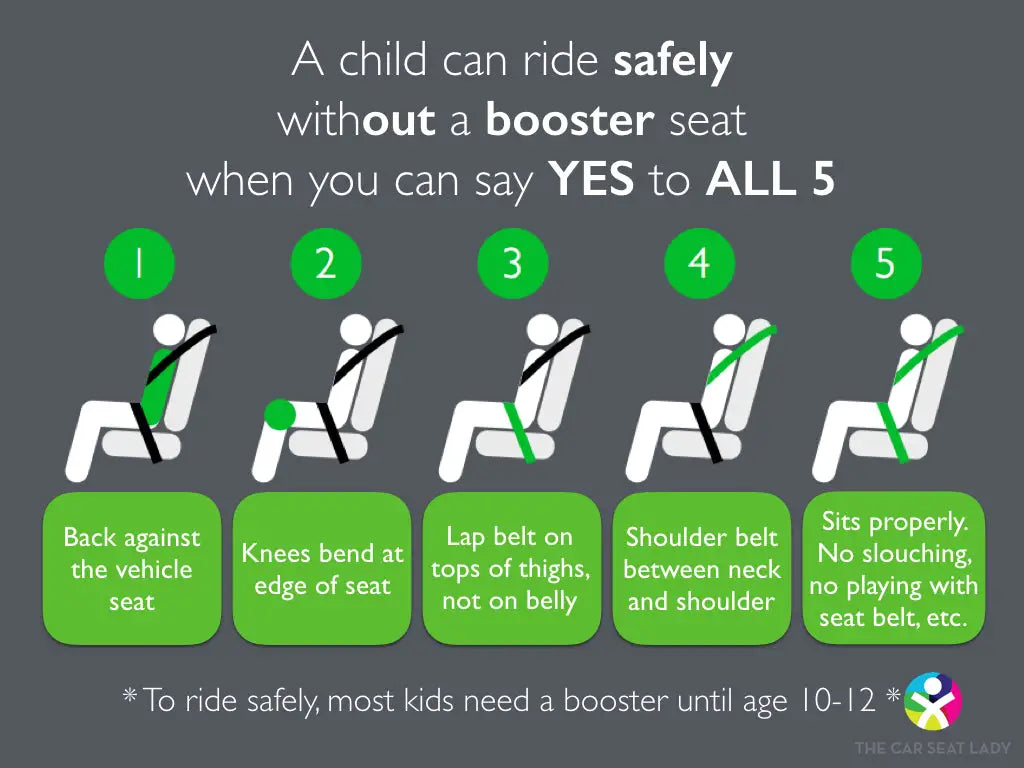Ensuring your child's safety while traveling is a top priority for every parent. Car seats play a crucial role in reducing the risk of injury in the event of an accident. However, proper selection, installation, and usage are essential to maximize their effectiveness.
Car Seats Matter - A Lot!
According to the National Highway Traffic Safety Administration (NHTSA), car crashes are a leading cause of death for children ages 1 to 13. Using the correct car seat can significantly reduce the risk of injury. In 2022, 599 child passengers (ages 12 and younger) were killed in motor vehicle crashes in the U.S., and more than 106,000 were injured. However, child safety seats reduce fatal injuries by 71% for infants and 54% for toddlers in passenger vehicles.
Choosing the Right Car Seat
Selecting the appropriate car seat depends on your child's age, weight, and height. The CDC provides guidance on child passenger safety, including recommendations for car seats. They emphasize that children should always be buckled in an age- and size-appropriate car seat, booster seat, or seat belt to reduce the risk of injury in a crash. Their guidelines include:
- Rear-facing car seats must be in rear facing seat until at least 2 years old
- Forward-facing car seats with a harness child must be at least 2 years old to be in a front facing car seat.
- Booster seats for children who have outgrown forward-facing seats, until seat belts fit properly.
- Seat belts for older children once they fit correctly without a booster seat.
The CDC also advises keeping children properly buckled in the back seat until age 13 for maximum safety. You can check out their full recommendations here.
Why Rear-Facing Car Seats Are Crucial
Rear-facing car seats provide the best protection for infants and toddlers. They reduce the risk of severe injuries in crashes by supporting the child’s head, neck, and spine.
- Better Protection in Crashes: In a frontal collision, which is the most common type of car accident, a rear-facing seat distributes the impact forces across the child's back, head, and neck.
- Supports Fragile Anatomy: Babies and toddlers have disproportionately large heads and weaker neck muscles. A rear-facing seat cradles their head and spine, preventing excessive movement that could lead to severe injuries.
- Proven Safety Standards: The American Academy of Pediatrics (AAP) recommends keeping children rear-facing for as long as possible, ideally until they reach the height or weight limit of their car seat—often up to age 4.
Common Concerns About Rear-Facing Seats
- Legroom: Parents often worry about their child’s legs being cramped, but children naturally adjust their seating position. Studies show they are not at increased risk for leg injuries.
- Transitioning Too Soon: Many parents switch to forward-facing prematurely, but every transition reduces protection. Keeping a child rear-facing longer significantly lowers the risk of injury.
International Best Practices
- In Sweden, children routinely ride rear-facing until age 4 or even longer, and the country has one of the world's lowest child fatality rates in car crashes.
- New safety regulations in the EU encourage longer rear-facing use, following extensive research on crash impact forces.
Proper Installation and Usage
Incorrect installation is a common issue that compromises car seat effectiveness. The NHTSA emphasizes the importance of following manufacturer instructions and using either the LATCH system (Lower Anchors and Tethers for Children) or the vehicle's seat belt. Additionally, parents should ensure:
- The car seat is tightly secured with minimal movement.
- The harness straps are snug and positioned correctly.
- The chest clip is at armpit level.
- The seat is installed in the back seat, which is safest until age 13.
Benefits of Professional Installation
While many parents opt for self-installation, professional car seat installation offers significant advantages:
- Ensures Correct Installation: Studies show that over 70% of child seats are not correctly secured. Certified technicians ensure proper positioning, tightness, and harness adjustment.
- Reduces Injury Risk: Proper installation helps absorb shock and distribute crash forces more evenly, significantly lowering the risk of injury.
- Expert Guidance: Technicians provide hands-on demonstrations, ensuring parents understand how to adjust straps, check seat angles, and secure the seat properly.
- Peace of Mind: Parents can feel confident knowing their child’s seat is installed correctly, reducing stress and uncertainty.
State Laws Often Require a Car Seat Before Leaving the Hospital
Every U.S. state requires that newborns be transported in a properly secured car seat when leaving the hospital, though specific enforcement varies. Many hospitals have their own car seat discharge policies, ensuring that parents have a correctly installed car seat before leaving. Some hospitals even conduct a car seat test, where newborns—especially preemies—must remain safely seated for a set time to confirm they can maintain their breathing and posture.
Common Mistakes to Avoid
Many parents unknowingly make errors when using car seats. Some of the most frequent mistakes include:
- Transitioning to the next seat type too soon.
- Using aftermarket accessories that compromise safety.
- Failing to register the car seat for recall notifications.
- Not checking seat belt fit in different vehicles.
- Improperly adjusting the tightness and/or position of the harness and chest clip (if available)
Booster Seats:

Resources for Further Reading
For additional guidance, safety ratings, and expert recommendations, visit:
- CDC Child Passenger Safety Resources – Offers guidelines, handouts, and social media graphics to help parents and caregivers understand car seat safety.
- California Department of Public Health Car Seat Basics – Provides information on selecting, installing, and using car seats correctly, along with links to inspection services.
- NHTSA Car Seat & Booster Seat Safety Guide – Covers car seat types, installation instructions, safety ratings, and recall notices.
Final Thoughts
Car seat safety is a critical aspect of child passenger protection. By choosing the right seat, installing it correctly, and following expert recommendations, parents can significantly reduce the risk of injury in the event of a crash. Rear-facing car seats provide the best protection for infants and should be used as long as possible within the seat’s weight and height limits. Booster seats help ensure proper seat belt fit and should be used until the seat belt fits correctly without one, typically between ages 9–12.
The Pump Station & Nurtury has certified car seat installers on staff - and we offer free installation in your vehicle with your car seat purchase! More questions? Give us a call at 310-998-1981.







